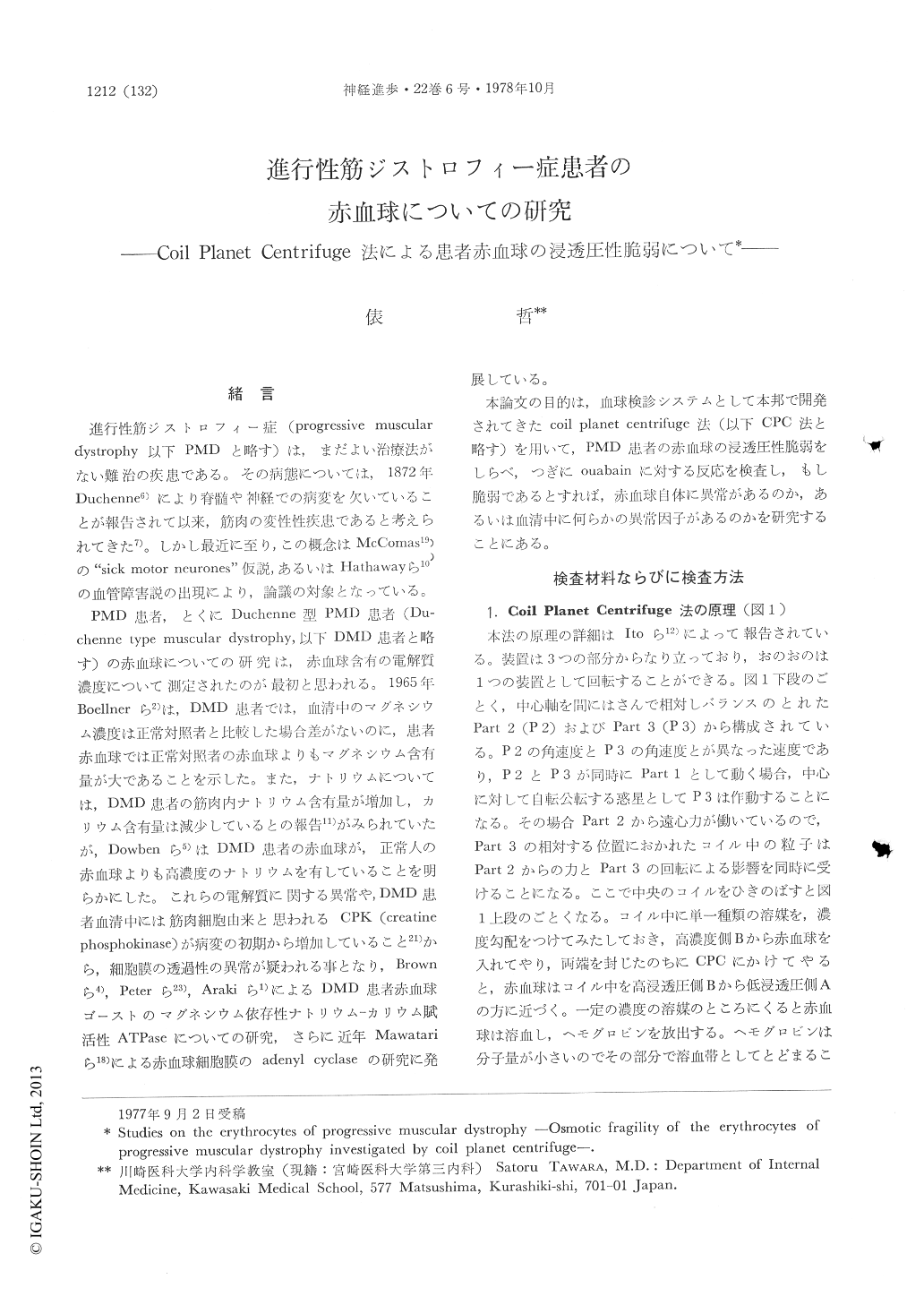Japanese
English
- 有料閲覧
- Abstract 文献概要
- 1ページ目 Look Inside
緒言
進行性筋ジストロフィー症(progressive musculardystrophy以下PMDと略す)は,まだよい治療法がない難治の疾患である。その病態については,1872年Duchenne6)により脊髄や神経での病変を欠いていることが報告されて以来,筋肉の変性性疾患であると考えられてきた7)。しかし最近に至り,この概念はMcComas19)の"sick motor neurones"仮説,あるいはHathawayら10)の血管障害説の出現により,論議の対象となっている。
PMD患者,とくにDuchenne型PMD患者(Duchenne type muscular dystrophy,以下DMD患者と略す)の赤血球についての研究は,赤血球含有の電解質濃度について測定されたのが最初と思われる。1965年Boellnerら2)は,DMD患者では,血清中のマグネシウム濃度は正常対照者と比較した場合差がないのに,患者赤血球では正常対照者の赤血球よりもマグネシウム含有量が大であることを示した。また,ナトリウムについては,DMD患者の筋肉内ナトリウム含有量が増加し,カリウム含有量は減少しているとの報告11)がみられていたが,Dowbenら5)はDMD患者の赤血球が,正常人の赤血球よりも高濃度のナトリウムを有していることを明らかにした。
Osmotic fragility of the erythrocytes of human muscular dystrophy was investigated by Coil Planet Centrifuge, which had been evolved since 1966 when it was invented in Japan.
Materials were erythrocytes of human muscular dystrophies and carriers (Duchenne type 35, Duchenne carrier 7, limb-girdle type 20, facio-scapulohumeral type 1) and normal controls (infants and children 18, adult 31). The whole blood (12μl) were packed into the higher osmolar end of the coil tubes filled with four fluids (NaCl, NaSCN, NaI and Nal+ouabain 10-7mol) of gradient (30~150mOsm).

Copyright © 1978, Igaku-Shoin Ltd. All rights reserved.


